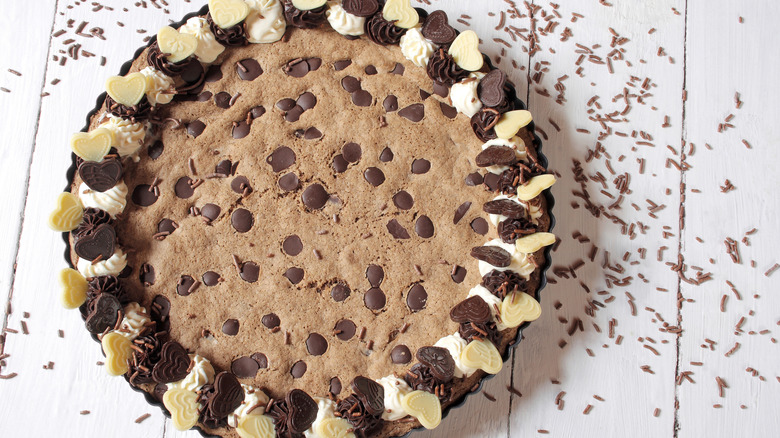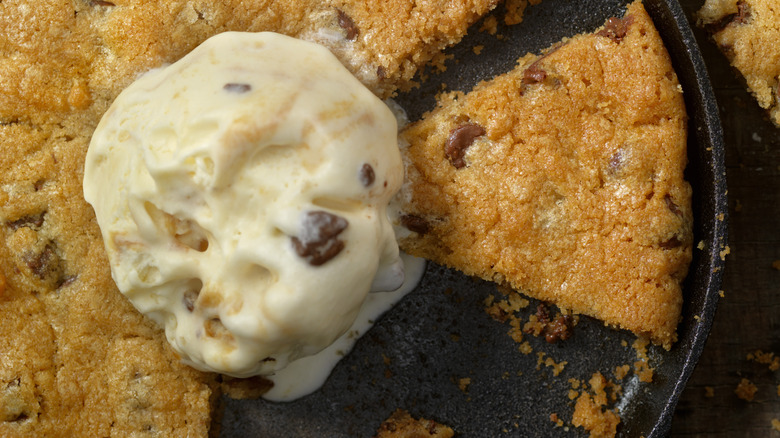The Pantry Staple That Ensures A Melt-In-Your-Mouth Cookie Cake
Cookies and cakes are two principal dessert categories treasured for two distinct textural profiles. That said, cookie cakes have become a famous dessert, providing the best of both worlds. You can make a cookie cake more than just a giant cookie by transforming dense and chewy cookie dough into a light and airy cake batter with a soft, fluffy crumb. The pantry staple that ensures this light, melt-in-your mouth cookie cake is baking powder.
While most cookie and cake recipes call for a combination of flour and a leavening agent, baking powder is especially important for fluffier cake-like textures. Not to be confused with baking soda, baking powder contains a blend of baking soda and an acid, like cream of tartar. The baking soda and cream of tartar encompass two key leavening reactions that result in a much lighter crumb. However, the difference between a cookie and a cookie cake isn't just the baking powder, but the baking powder and flour proportions.
A cookie cake uses more baking powder and less flour than a typical cookie recipe because you expect it to rise. Furthermore, it requires more eggs as both a leavening and moisture agent. Instead of baking free-form cookies with crispy edges and a dense chewy middle, cookie cake batter increases the baking powder and eggs to trap more air as it bakes.
More cookie cake tips
Baking powder is necessary for a cake-like crumb, but many cookie cake recipes strive to be more like a giant cookie. For example, this over-the-top cookie cake recipe turns individual oversized cookies into cake layers. If you want a dense, chewy, fudgy cookie cake, you can use baking soda instead of baking powder. But the two aren't interchangeable, so you can't swap the same measurements. If you're looking for a cookie cake with a chewy density but rises a bit more, you can use both leavening agents. A cookie cake recipe is less of a hassle than making individual cookies because you don't have to chill the dough or roll it into balls.
Like cookies, cookie cakes start with room temperature butter for creaming with sugar. Brown sugar is another must, adding a rich, caramelized depth of flavor. You'll still want some white sugar to balance wet and dry ingredients so the cake isn't too dense or crumbly. You can also add a few teaspoons of cornstarch for an even softer crumb that'll also help absorb excess moisture. However, if density and moisture is what you're looking for, you can always turn your cookie cake into more of a blondie by using melted butter and only brown sugar.

